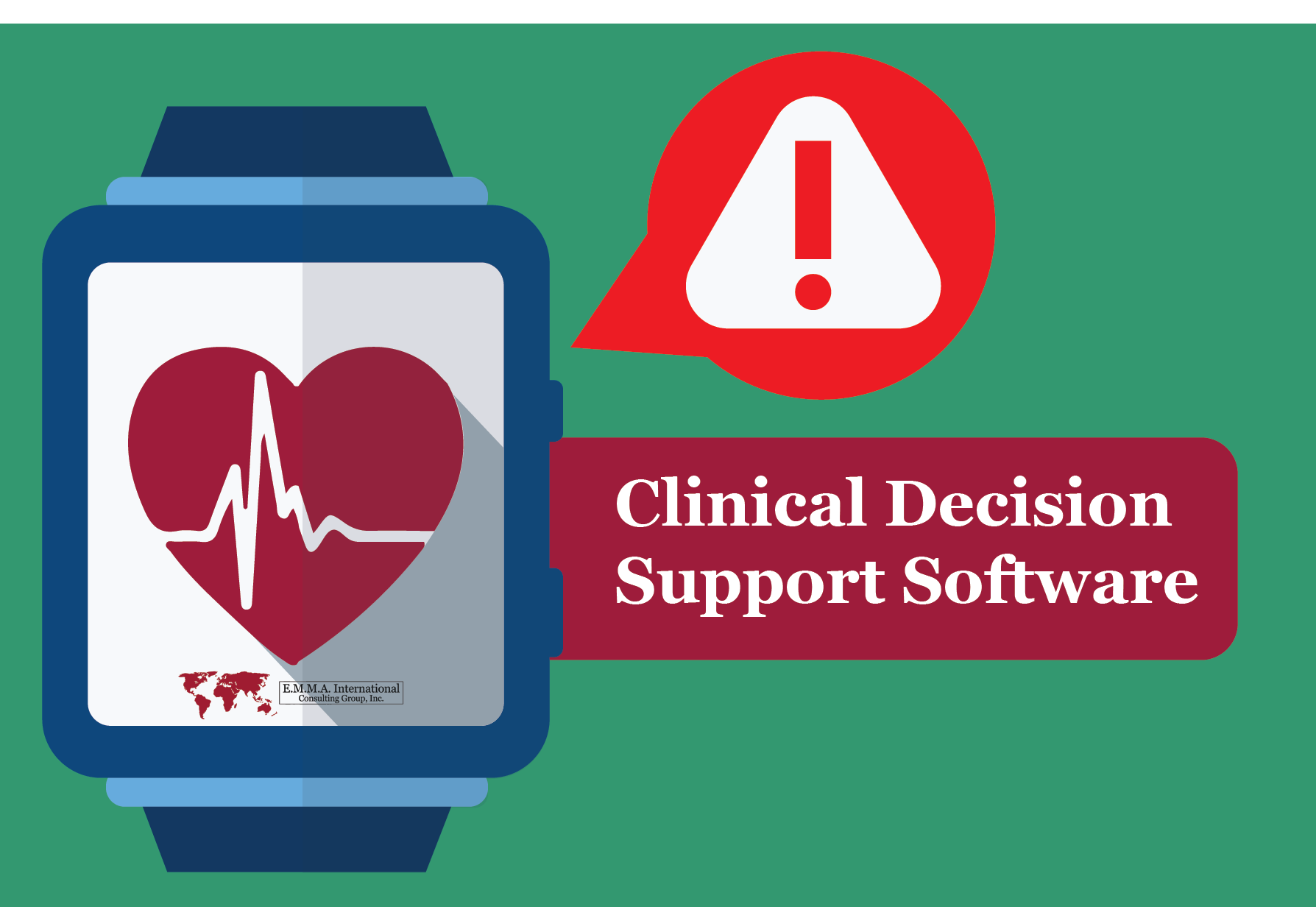Clinical Decision Support Software is a tool that is utilized in making decisions for the diagnosis, treatment, prevention, cure or mitigation of diseases and other critical conditions. Such a tool provides clinicians, health care staff or patients with intelligently filtered patient specific data extracted from their medical records at appropriate times to guide clinical decisions.1 The information obtained by clinicians and other practitioners can be categorized as follows : Clinical guidelines, reminders for providers and patients, computerized alerts, condition-specific order sets, documentation templates, diagnostic support, focused patient data reports and summaries. By adopting and implementing such a tool, there can be drastic improvements in the quality of care provided to the patients with the help of information obtained from the software. CDS software can potentially assist in the prevention of errors in decision making by evaluating health data and providing medication error alerts, including any allergy indications, thus avoiding adverse health effects.2
FDA’s regulatory approach to CDS software has been outlined in the draft guidance document “Clinical Decision Support Software” released on September 27, 2019.3 Moreover, changes that were made in the 21st Century Cures Act have also been incorporated into this draft guidance. The guidance clarifies the types of software functions that: (1) do not meet the definition of a device as amended by the Cures Act; (2) may meet the definition of a device but for which, at this time and based on FDA’s current understanding of the risks of these devices, premarket clearance or premarket approval requirements may not be applicable; & (3) meet the definition of a device and on which FDA intends to focus its regulatory oversight. Furthermore, FDA intends to enforce Software as a Medical Device: Possible Framework for Risk Categorization and Corresponding Considerations (IMDRF framework) for the oversight of CDS software.4
At this point, FDA does not intend to regulate CDS software that fall into the low risk category of the IMDRF classification system. This includes non-device CDS function in cases where health care professionals do not depend on the software recommendations even if the healthcare situation or condition is serious, non-serious or critical. However, FDA intends to impose its regulatory oversight for the Device CDS software functions that are utilized for:
- Treatment of serious or critical situation.
- Providing Clinical management with information regarding a serious or critical situation.
- Situations when patients or health care professionals cannot independently assess the basis for software recommendations.5
The guidance document is still in its draft stage and is open for public comments. If you would like to submit your comments, visit https://www.regulations.gov/docket?D=FDA-2017-D-6569.
Need help understanding this, or any other FDA guidance, give us a call at 248-987-4497 or email info@emmainternational.com.
1HealthIt.gov (April 2018) “Clinical Decision Support” retrieved from https://www.healthit.gov/topic/safety/clinical-decision-support on 10/22/2019
2Sima Ajemi and Fatemeh Amini (December 2012) “ Reduce Medication Errors with Clinical Decision Support System ” retrieved from “ https://www.longdom.org/open-access/reduce-medication-errors-with-clinical-decision-support-systems-2165-7866.S7-e001.pdf ” on 10/23/2019
3FDA (September 2019) “ Clinical Decision Support Software, Guidance for Industry and Food and Drug Administration Staff ” retrieved from “https://www.fda.gov/regulatory-information/search-fda-guidance-documents/clinical-decision-support-software” on 10/22/2019
4IMDRF Software as Medical Device Working Group (September 2014) “Software as a Medical Device: Possible Framework for Risk Categorization and Corresponding Considerations” retrieved from “http://www.imdrf.org/docs/imdrf/final/technical/imdrf-tech-140918-samd-framework-risk-categorization-141013.pdf” on 10/22/2019
5FDA (September 2019) “ Clinical Decision Support Software ” retrieved from “https://www.fda.gov/media/109618/download ” on 10/23/2019





